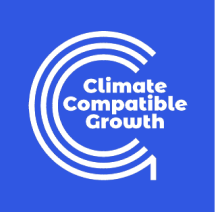A new research paper by Daniel Mutia Mwendwa, Alycia Leonard and Stephanie Hirmer is the start of a project that could see significant increases in crop yields by using water more efficiently across Kenya and other countries where drought is a major factor. Here, Daniel Mwendwa talks about the new paper he has helped to write

Can you tell me a little bit about yourself first?
Yes. I came to Oxford as a Rhodes Scholar in 2021 to do my master’s degree in Energy Systems. It was during my master’s that I started to engage with some of the work that CCG was doing. At that time, we did some work to assess the availability and quality of geospatial datasets for least-cost energy planning in Kenya. During my master’s dissertation, I started working with Stephanie Hirmer and Alycia Leonard from CCG. We were exploring possible research areas in energy for development, and the area we chose was energy for irrigation which is what this paper is about.
And were you always interested in climate related things or was that something that developed over time?
It’s one of my main interests and what drew me into studying engineering. I come from a region in Kenya with no electricity access and high deforestation for firewood, so the challenges associated with that drew me to pursue a career in the energy sector as an undergraduate at the University of Edinburgh.
What were the origins of this work?
The inspiration behind it was that solar-powered irrigation is a very promising, upcoming technology and it’s been highly adopted in South Asian countries like India, Bangladesh, and Nepal. But when you look at the context of sub-Saharan Africa, it is much less so. Sub-Saharan Africa has the lowest level of irrigation. Due to the increasing use of geospatial tools to support decision-making, we decided to look for a way to help policymakers decide where to focus irrigation deployment efforts and where more interventions might be needed.
When we looked at the few research papers assessing the viability of solar-powered irrigation in sub-Saharan African countries, we found that the geospatial methods used were not very easily reproducible. Fortunately, because time has passed, there are new geospatial datasets which are openly available, and we thought we could make something that works using those new datasets. So, we developed a methodology that works with openly available data on weather, rainfall, temperature, water depth and so on. Some of the datasets are not perfect, but there is a good level of accuracy to them.
The kind of analysis we’ve done is quite high level, so it doesn’t take away the need to go on the ground and speak to people in future to verify certain things. But we are pleased with the initial results.
I understand. In terms of the solar powered irrigation equipment, is that something that farmers would have to buy, or could it be locally manufactured across Kenya?
Currently, I don’t think there is any manufacturing happening in Kenya but there are companies that are retailing the equipment, such as SunCulture, Futurepump and others, so the equipment is available and being used in certain areas. However, the initial costs are quite high, reducing affordability.
So the return on investment is quite quick, if the crop yields increase and you’re able to sell more, the money you generate helps pay for the solar equipment.
Yes. So that’s what we are trying to show – that the technology is cost competitive. That’s the finding in Kenya and their cost competitiveness increases with how much you use them.
What is on the market now is tailored for small-scale farming – to service one or two acres – and there are different business models: individual ownership, community ownership, and fee for service where farmers don’t actually own the equipment. Innovators and entrepreneurs are trying new innovative models such as lease-to-own, pay-as-you-go and pay-as-you-grow.
Are there any tangible economic benefits you can point to so far? Are you able to predict what kind of percentage improvement of yield the introduction of irrigation would bring to the farmers?
It’s work that we are currently doing to estimate how much irrigation would actually improve the yields, but we didn’t do that in this particular paper. That’s an ongoing piece of work, which is very important, but we do know that yields will increase by at least 50%, and farmers will be able to farm across the year, which you don’t get without irrigation and water availability.
I see. Fascinating. Is there anything particularly novel about your approach or the way you’ve used the model?
What’s novel about it is its ability to be easily reproduced in different areas, using data that is openly available. Our model is very simple to use, and you don’t need to move between several other tools when running analysis.
That’s good news. Who do you think needs to hear about this most of all?
I think the people who do energy planning and water use policies should be most interested in it because it’s very useful for them. And other researchers can build upon what we’ve done. Also, it will be of value to agrifood entrepreneurs because the results can point them to areas of high potential interest.
An important thing to say is that this is supposed to be a starting point. It’s not an end. There’ll be more work that we produce in the near future that will continue to offer more insights into the area.
That’s good to know. It seems to me that GIS is a very exciting and useful approach.
The paper is available to read here
